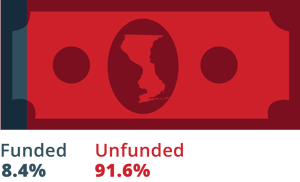Escambia County has had four so-called “100-year” flood events in the last ten years. It doesn’t take an engineer, elected official, or a concerned citizen to tell you that these storms are happening frequently now. This, coupled with the fact that the Escambia region is one of the rainiest in the country, should mean that flooding is a top priority for Escambia County. Sadly, it’s not.
As a civil servant who served the County for 25 years, I witnessed firsthand the devastation families experienced. It saddens me because I know we can do much better if our elected officials made flooding a priority.
My County staff colleagues and I did the best we could with very few dollars and not enough manpower – all while fighting lots of state and federal bureaucracy. I’ll be honest, it was really frustrating always begging for bigger budgets that would have funded good flood protection projects and appropriate staff to manage them. But, after the floodwaters go down, so do the complaints from citizens, and the County Commissioners move on to other items.
When the Flood Defenders organization contacted me and told me that they would help make voters’ voices for flood protection louder, I jumped on the opportunity to help. It’s the elected officials that need the pressure – not my former coworkers in the Engineering and Public Works Departments.
Flood control can be complicated, but this is a common-sense solutions framework:

The SWAT plan was the start of better flood protection, but like everything associated with flood protection, momentum around the plan dried up after the storm. Today only 9% of that plan is funded. Even worse the County has not even filled the vacant Stormwater Engineering Manager position to keep the plan updated. Other counties have good plans. And, guess what? This enables them to get lots of grant money from the state and federal levels.
Good plans start with good maps. Unfortunately, the FEMA maps that support our system of insurance and grants are either inaccurate or incomplete. Escambia County has 36% more homes in the floodplain than the FEMA maps show.
My school letter grade for the county – C

The rule is that the flow rate (amount of water flowing off the property) after building cannot be more than before building. This is a good common sense rule – as long as the math is right – and it’s not. As I referenced at the beginning of the blog, our old standards of extreme rainfall events don’t apply anymore. The statistical rainfall data used in these calculations desperately needs to be updated.
Most of the excess water created by development relies on retention ponds to capture that water. However, this assumes that these ponds are well maintained which requires sufficient personnel budgets. Unfortunately, the maintenance department is severely underfunded and understaffed.
My school letter grade for the county – C

$1 now saves up to $7 later
The $417 million SWAT plan created in 2015 remains largely unfunded. You may be one of the thousands of homeowners who would have avoided flood damage if the project in your neighborhood had been funded. 
The County is only investing $4 million per year of Local Option Sales Tax drainage funds for new projects and the personnel to manage them. Crazy.
There are lots of good projects out there that will save homes from flooding.
My school letter grade for the county – F

My school letter grade for the county – D
Your Voice Matters
When I managed the Stormwater Engineering Division we tried to convince the Administration and Commissioners to give us more funding, but we didn’t have enough push from citizens to make it a priority. The squeakiest wheel gets the most grease, and we need to squeak more.
With more development and intense rainfall events, it probably won’t be too long before the waters come again. It doesn’t take much to have water in the streets.
There is hope. Recently the County approved an easement for a $2 million drainage mitigation project for Lake Charlene Phase 1. If this upgrade had happened prior to Hurricane Sally, as many as 75 homes could have avoided flooding, and reduced flooding for over 200 properties Additionally, the County has initiated an application process for more buyouts in the area of Bristol Park subdivision in the floodplain of Eleven Mile Creek.
Help us achieve successes like these in your neighborhood! Click here to sign the “Fund the Plan” Petition. And, don’t hesitate to email me at cacurb@gmail.com with any questions.
